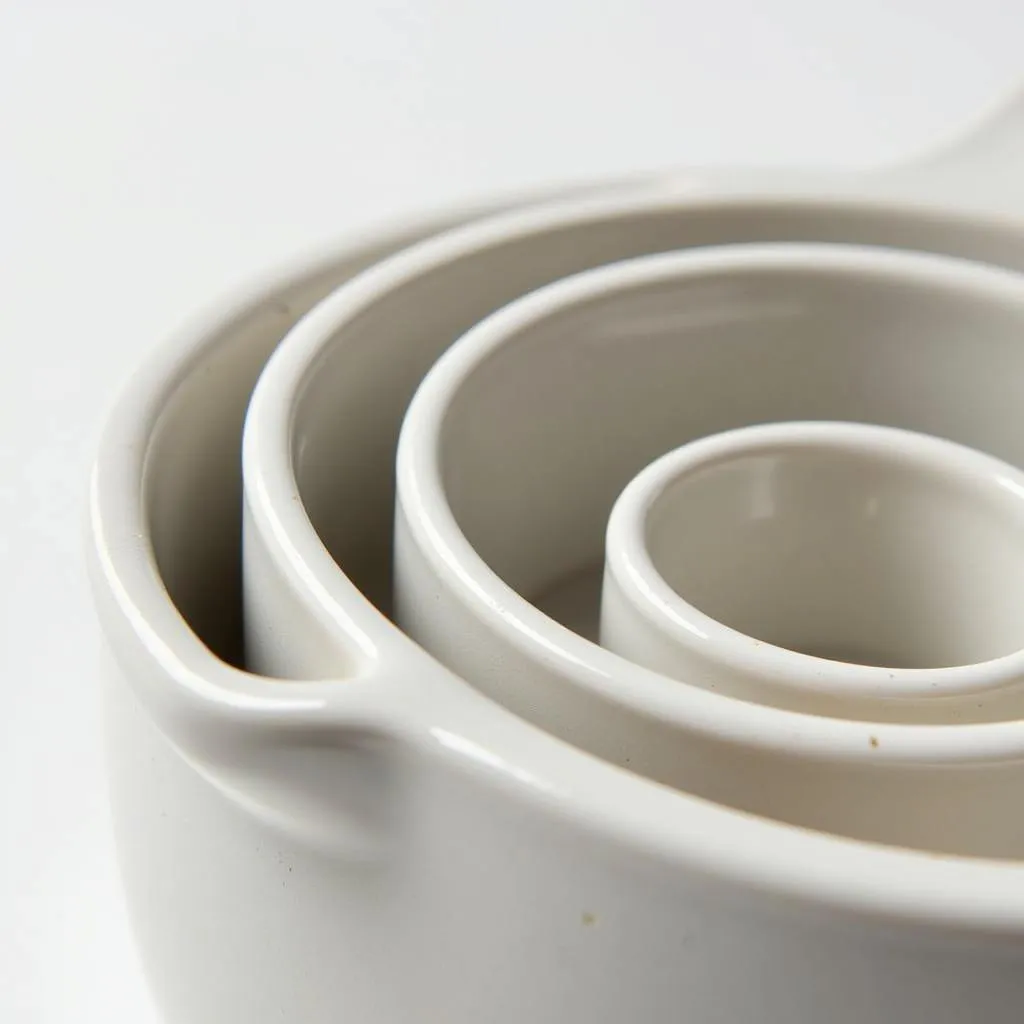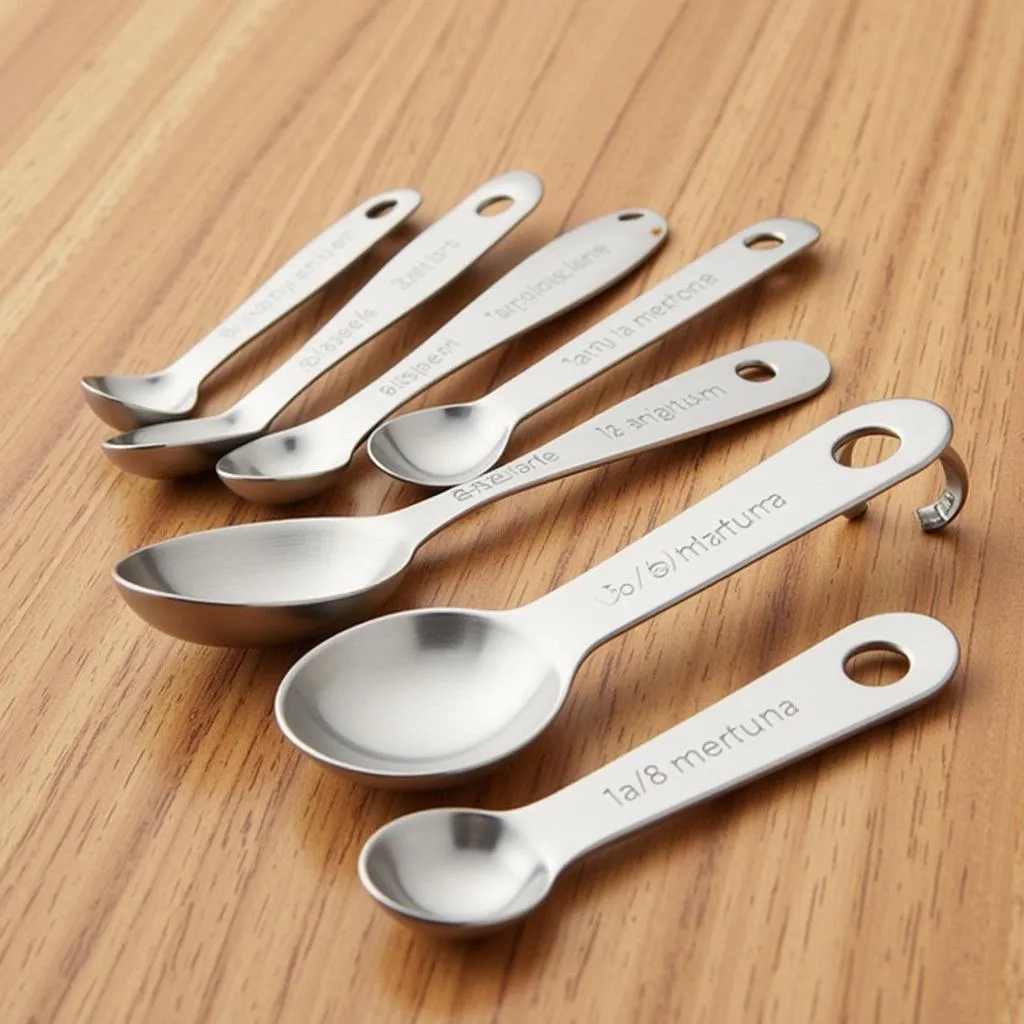Have you ever found yourself staring at a recipe, utterly confused by the conversion of “1 16 cup” to tablespoons? You’re not alone! This seemingly simple measurement can be a bit tricky, especially when you’re in the middle of baking and need a quick solution.
This article will guide you through the conversion process, explain the reasoning behind it, and provide you with helpful tips for future baking endeavors.
Understanding the Basics: Cups and Tablespoons
Before we dive into the conversion, let’s clarify the basic units of measurement: cups and tablespoons.
- Cup: A cup is a standard unit of volume measurement used in cooking and baking. It typically refers to a US customary cup, which equals 8 fluid ounces.
- Tablespoon: Abbreviated as “Tbsp,” a tablespoon is a smaller unit of volume measurement, with 1 US customary tablespoon equaling 1/2 fluid ounce.
 Measuring cups and tablespoons set
Measuring cups and tablespoons set
Converting 1 16 Cup to Tbsp
Now, let’s address the elephant in the room: “1 16 cup” is not a standard measurement. It’s likely a typo and should probably read as either “1/16 cup” or “1 cup and 16 tablespoons”.
Scenario 1: Converting 1/16 Cup to Tbsp
If the recipe calls for 1/16 cup, here’s how to convert it:
- 1/16 cup is equal to 1 tablespoon.
This is because a whole cup has 16 tablespoons. Therefore, 1/16 of a cup is simply one tablespoon.
Scenario 2: Converting 1 Cup and 16 Tbsp
If the recipe requires 1 cup and 16 tablespoons, the conversion is straightforward:
- 1 cup equals 16 tablespoons.
- Therefore, 1 cup and 16 tablespoons equal 32 tablespoons.
 Various sizes of measuring spoons used in baking
Various sizes of measuring spoons used in baking
Common Baking Conversions
To make your culinary journey even smoother, here are some common baking conversions to keep in mind:
- 1 cup = 16 tablespoons
- 1/2 cup = 8 tablespoons
- 1/4 cup = 4 tablespoons
- 1 tablespoon = 3 teaspoons
Tips for Accurate Measurement
Accurate measurement is crucial for successful baking. Here are a few tips:
- Use standard measuring cups and spoons: Avoid using regular utensils for measurement, as they may not be accurate.
- Level off dry ingredients: When measuring dry ingredients like flour or sugar, use a straight edge (like a knife or a spatula) to level off the excess from the cup or spoon.
- Don’t pack down dry ingredients: Unless specified in the recipe, avoid packing down dry ingredients, as it can affect the final texture of your baked goods.
Conclusion
Converting “1 16 cup” to tablespoons requires understanding the intended measurement, whether it’s 1/16 cup or 1 cup and 16 tablespoons. With the right knowledge and tools, you can confidently tackle any baking recipe and impress everyone with your culinary skills!
FAQs
1. What is the difference between a dry measuring cup and a liquid measuring cup?
Dry measuring cups are designed for scooping and leveling off dry ingredients, while liquid measuring cups have a spout for pouring and are used to measure liquids accurately.
2. Can I use the same measuring cup for both dry and liquid ingredients?
While you can technically use the same cup, it’s recommended to use separate cups for better accuracy, especially for precise baking recipes.
3. What happens if I don’t measure ingredients accurately?
Inaccurate measurements can lead to undesirable results in baking. Your baked goods may turn out too dry, too dense, or not rise properly.
4. Are there any online resources for baking conversions?
Yes, many websites and apps offer quick and easy baking conversion tools. You can find them by searching for “baking conversion calculator” online.
5. What are some helpful tips for measuring sticky ingredients like honey or syrup?
To prevent sticky ingredients from sticking to your measuring spoon, spray the spoon with cooking oil or coat it with a thin layer of flour before measuring.
Looking for more baking tips and tricks? Check out these helpful articles:
Need further assistance? Our team is here to help!
Contact us at 0372999996 or email us at [email protected]. You can also visit us at 236 Cầu Giấy, Hà Nội. We offer 24/7 customer support for all your baking needs!
